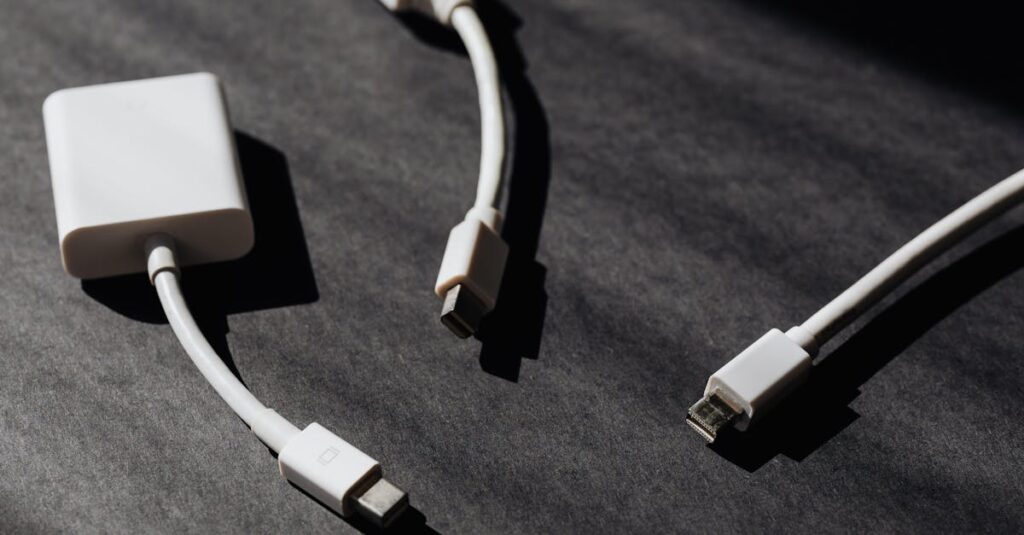Ever found yourself wondering if you can drive with an OBD (On-Board Diagnostics) scanner plugged in? It’s a common question, especially among those who are keen on monitoring their vehicle’s performance in real-time.
The short answer is yes, you can. However, it’s not as simple as it sounds. There are certain factors and precautions to consider. In the following sections, I’ll delve into the specifics and give you a comprehensive understanding of the matter.
What is an OBD scanner?
An OBD scanner, or On-Board Diagnostics scanner, is a high-tech device we modern motorists should thank our lucky stars for. This intelligent tool has transformed vehicle maintenance from a guessing game to a science. But what exactly is it and how does it work?
Simply put, an OBD scanner is a device that interacts with a car’s on-board computer systems. Once connected, it communicates with your vehicle’s internal diagnostics, displays various engine and control module data, and retrieves stored diagnostic trouble codes (DTCs). This allows me to understand if there are any problems with my car and what part may require attention.
It’s electronically complex but user-friendly as can be. Plugged into a specific port (usually located under the dashboard), an OBD scanner quickly analyzes key systems — from fuel injectors to transmissions and everything in between. Essentially, where there’s a sensor, an OBD scanner listens in.
No matter the issue, this diagnostic tool becomes an essential part of troubleshooting for today’s smart vehicles. Whether it’s emissions systems, ignition, speed controls, or even the airbag systems, the OBD scanner is on the case.
To put it in terms of data, let’s take a look at some key numbers showing the improvements brought by the OBD scanner in vehicle diagnostics:
| Aspect | Before OBD Scanner | After OBD Scanner |
|---|---|---|
| Diagnostic Accuracy | ~60% | ~95% |
| Repair Time | Weeks | Days |
| Repair Cost | High | Considerably Lower |
We’ve come a long way from the trials and tribulations of early motoring. We’re now at a place where comprehensive vehicle diagnostics are just a plug-in away.
Now that we’ve got a pretty good grip on what an OBD scanner is and what it does, the following sections will delve into the use cases and when you should ideally have the scanner plugged in. This discussion forms a vital part of answering the primary question, “Can you drive with OBD plugged in?” So, keep those engines running and let’s drive straight into the next section.
Benefits of driving with an OBD scanner plugged in
Driving with an OBD scanner plugged in presents a number of advantages, facilitating both preventive maintenance and instant troubleshooting. The scanner supplies vital data, allowing vehicle owners to take more control of their auto maintenance regimen.
One of the significant benefits is real-time monitoring of vehicle health. Remember, a car’s health revolves around numerous variables, from air-fuel ratios to engine temperature. With the scanner connected, you’ve got access to this data as you drive. It helps detect problems the moment they arise, enhancing the chances of resolving them before they escalate into major issues.
Moreover, there’s the benefit of instantaneous error detection. An OBD scanner doesn’t just inform you that there’s a problem – it specifies what the problem is by reading the trouble codes from the car’s computer. This proves incredibly time-saving as you won’t need to guess what’s wrong with your vehicle or spend hours with a mechanic guessing the cause of the problem.
Beyond the aspect of error detection, an OBD scanner aids in efficient fuel consumption. By monitoring parameters like oxygen sensor readings and throttle position, the scanner can help identify issues that are causing poor fuel efficiency. Therefore, driving with the scanner plugged in can assist in optimizing fuel usage – a benefit that really helps the pocket.
Finally, it’s worth mentioning that having the scanner connected enables readiness for emission testing. This is because the OBD system keeps track of your vehicle’s emission-related components and systems. In jurisdictions where emission testing is mandatory, the scanner provides data that can help you ensure the vehicle is ready for the test.
So, is it safe to drive with an OBD scanner plugged in? In short, yes! As long as the device has been properly installed and is used as directed, operational safety should not be compromised.
Precautions to consider when driving with an OBD scanner plugged in
While there are profound benefits to driving with an OBD scanner plugged in, it’s crucial to also consider certain precautions. Let’s delve deeper into this aspect to ensure you make the most of your OBD scanner without compromising safety and optimal usage.
Firstly, always ensure proper installation. Incorrectly plugged-in OBD scanners can cause issues ranging from data inaccuracies to possible electronic interference. Your best bet? Stick to the manual. These guidelines will instruct on correct installation and usage, helping you avoid any unwarranted complications.
Secondly, don’t let the device distract you while driving. Sure, real-time data can be enlightening, but safety should still be your top priority. If needed, ask a passenger to monitor the data or pull over to analyze the readings. Remember, it’s not worth risking safety for the sake of real-time vehicle diagnostics.
Thirdly, avoid ‘cheap’ or ‘knock-off’ scanners. The market is inundated with budget-friendly options, but not all ensure reliable results or follow stringent safety measures. It’s akin to buying counterfeit car parts – you might save now, but may pay the price later. Splurge on a reputable brand with good reviews and proven track record.
Lastly, know that OBD scanners are not miracle devices. They provide valuable input, yes, but can’t replace professional assessment and repair. These devices serve as a guide, providing initial diagnostic information for potential issues preventive maintenance.
Highlighting these precautions is not meant to discourage the use of OBD scanners. Far from it. It’s more about understanding how to integrate these devices into your driving experience responsibly and efficiently. To extract maximum value from your OBD scanner, just install properly, don’t let it distract you, avoid knock-offs, and remember that they don’t replace professional help.
Remember, it’s not simply about plugging the device in and expecting magic. Educate yourself on both its benefits and precautions, embracing the technology without getting complacent with vehicle maintenance or personal safety. That’s how you master the art of driving with an OBD scanner.
Potential risks of leaving the OBD scanner connected while driving
Driving with an OBD scanner plugged in represents a union of technology and vehicle operation with the promise of improved maintenance. However, this blend isn’t without risks. You must be aware of the potential pitfalls this integration can have.
One of the main risks lies in the area of interference. The OBD scanner can interfere with the electrical functions of the car if it’s improperly installed. Messy wiring and loose connections can lead to erratic behavior in electronics, causing disruptions in vehicle functions. OBD scanners are invasive devices by nature, tapping directly into your vehicle’s brain, the ECU.
Moreover, the scanner may likely cause distractions. I’m sure you’ve heard the phrase “eyes on the road, hands on the wheel.” Now imagine driving with an OBD scanner constantly spewing information at you. It is a surefire recipe for diverted attention and hasty driving decisions – quite a risk indeed.
Lastly, an OBD scanner may also present an issue of unreliability, especially those cheap or knock-off versions. These low-quality scanners have the potential to give inaccurate readings or intermittent feedback, leading drivers into a false sense of security, which might result in neglect towards professional vehicle servicing and assessment.
| Potential Risks | Explanation |
|---|---|
| Interference | Disruption in vehicle’s electrical function |
| Distractions | Diverted attention and hasty decisions |
| Unreliability |
Inaccurate readings from low-quality devices
It’s not to say that these risks render OBD scanners redundant, far from it. When used correctly and responsibly, they are incredibly beneficial. The trick is to have a good balance and know that an OBD scanner should never replace professional servicing, but supplement it. Remember: an OBD scanner is a tool, not a solution to all your vehicle’s problems.
Best practices for using an OBD scanner while driving
Using an OBD scanner while driving can certainly add to your driving experience and make it safer, providing real-time feedback on various key parameters of your vehicle. However, it’s important to be mindful of the risks discussed earlier. Here are certain practices to keep in mind when integrating an OBD scanner to your drive time.
Mindful Installation: The OBD port, situated under your dashboard, is central to many important functionalities of your vehicle. Connect your OBD scanner with utmost care to prevent any electronic interference that can potentially disrupt these functions.
Chose Quality over Price: It’s tempting to opt for the less expensive, knock-off OBD scanners. However, remember that these devices often provide erratic and inaccurate readings. Prioritize quality over price. Investing in a high-grade scanner maintains the integrity of the collected data and ensures your trust in the readings isn’t misplaced.
Avoid Dependence: Data from an OBD scanner can be of immense help in understanding your car’s real-time on-road performance. But it’s not prudent to rely solely on this device for your safety and vehicle’s maintenance needs. Regular professional servicing and adherence to your car’s maintenance schedule should complement the data derived from your OBD.
Safe Distractions: The real-time data flow from an OBD scanner can be a distraction if not managed properly. It’s important to set things up in a way that doesn’t divert your attention from the road. This could involve setting auditory rather than visual alerts or ensuring that your scanner’s display is within your natural visual field.
OBD scanners are powerful tools when used correctly. These best practices should go a long way in helping you get the most out of your device while minimizing potential risks or drawbacks.
Conclusion
So, can you drive with an OBD plugged in? Absolutely, but it’s essential to use this tool wisely. Mindful installation and quality scanner selection are key to getting accurate readings. While it’s a powerful tool, remember not to let it replace regular professional servicing. It’s also crucial to manage potential distractions from real-time data flow. Auditory alerts and proper display placement can help with this. When used correctly, an OBD scanner can greatly enhance your driving experience and keep your vehicle in top shape. Just remember to follow the best practices I’ve shared and you’ll be on the road to safer, more informed driving.
1. What is the best practice while using an OBD scanner when driving?
The article recommends mindful installation of the OBD scanner to avoid electronic interference. It’s also important to manage distractions from real-time data, which might be achieved through auditory alerts or strategic display placement.
2. Does the price of an OBD scanner matter?
Yes, according to the article, one should prioritize quality over price while choosing an OBD scanner. A low-priced scanner might not provide accurate readings, impacting diagnostic accuracy.
3. Should I rely solely on an OBD scanner for my vehicle’s maintenance?
No. While OBD scanners provide useful data, the article warns against becoming overly dependent on them. It recommends regular professional servicing to maintain vehicle health.
4. How can I minimize distractions caused by the data flow from an OBD scanner?
The article suggests using auditory alerts or ensuring proper placement of the display to manage distractions.
5. Can OBD scanners be beneficial for my driving experience?
Absolutely! OBD scanners are powerful tools that, if used correctly and mindfully, can help you understand your vehicle better, thus enhancing your driving experience.

